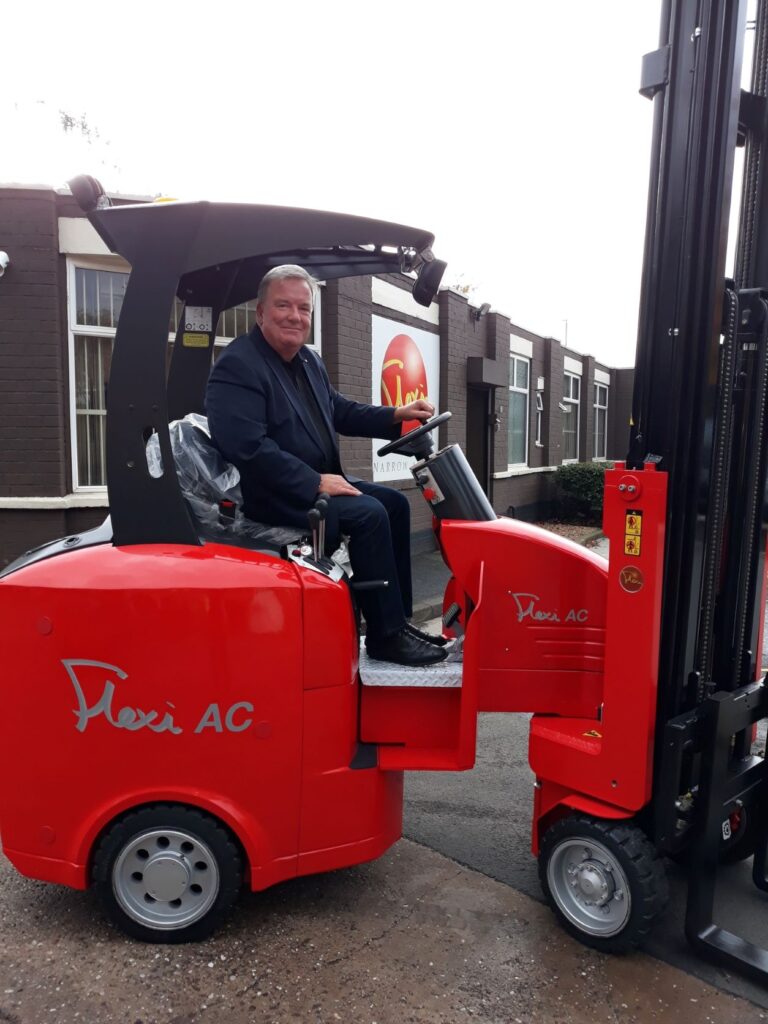Narrow margins deliver big returns
7th June 2022

VNA systems deliver many benefits, but warehouse designers risk compromising safety and productivity if they place too much emphasis on simply achieving the narrowest aisleways, says John Maguire, managing director of Narrow Aisle Ltd.
With the fallout from the pandemic and Brexit continuing to impact on manufacturing and retail supply chains, UK warehouse space remains in short supply. In fact, the problem has become so acute in some places that one leading industrial property consultancy has forecast that parts of Britain could completely run out of empty storage facilities within the next 12 months.
So, warehouse managers and intralogistics professionals are under huge cost pressure to utilise every square foot of space available to them in the most effective way. At many sites this means reconfiguring the layout of the existing storage system around the narrowest aisleways.
With typical VNA – very narrow aisle – applications aisle widths can be reduced to between 1,600 and 1,800mm, which allow e-Fulfilment customer orders to be picked at ground level shelves and locations. Compared to traditional ‘wide aisles’ zone picking, which usually need around 3,000mm to allow two ‘low-level order pickers’ to pass one another, the space saving potential of VNA systems to e-Commerce companies is immediately obvious.
And, of course, better space utilisation means increased storage capacity – which, in turn, equals reduced storage costs per square foot. In some cases, it might also mean that additional storage space (if, indeed, any can be found) is not required or a costly extension to the existing warehouse (if you have room and can obtain planning permission) is avoided.
But before you begin ripping out your racking and narrowing your aisleways, be aware that VNA solutions in e-commerce applications have different requirements to traditional wide aisle zone picking systems and there a number of important factors to consider before concluding that VNA is the way ahead for your business.
For example, because older ‘guided’ VNA stacking aisles are only slightly wider than the materials handling equipment that serves them, a guidance system – wire or rail – will usually be required to ensure that lift trucks do not collide with the racking. These can be costly to install.
Another consideration is training of your forklift operators. Operating guided VNA machinery requires additional training to conventional reach or counterbalanced trucks and, at a time when qualified forklift operators are hard to find, if your lift truck drivers struggle with the demands of guided VNA materials handling equipment technology, it could be a problem.
With the type of specialist materials handling equipment often specified to operate within very narrow aisles – such as man-up Combi trucks and man-down VNA trucks – it is essential to assess the different technologies and their suitability to your operation’s unique needs before investing.
For example, because man-up Combi VNA trucks are physically big pieces of kit, storage schemes have to incorporate large transfer gangways at both ends of each aisle to allow these long trucks to switch aisles. This often means that the space savings achieved by reducing the aisle widths can be lost.
In addition, there are efficiency issues associated with the physical picking process when a Combi truck is used: quite simply, reaching out from a fixed cab to a pick carton placed on a pallet some distance away and then travelling between picking locations are neither ergonomic or throughput efficient.
In a lot of very narrow aisle applications, high lift Flexi Truck articulated forklift trucks have replaced VNA man-up machines. Flexi Truck articulated trucks have the same fixed space mast frame carriage technology as high lift Combi VNA and this – combined with operator vision system technology that enables a crystal clear picture of the highest pallets to be transmitted to the operator’s in-cab screen – enables pallets to be picked and put-away up to over 14 metres high using a Flexi Truck.
Flexi Trucks have other advantages over traditional VNA machinery too, not the least of which is the ability to operate safely and efficiently without wire or rail guidance systems. The Flexi Truck retains a fork tilt function and therefore does not require costly ‘super flat’ concrete floor specification.
It is technically feasible for Flexi Trucks to pick up and turn pallets in as narrow as 1,600mm wide aisles, the absence of guidance systems means that aisle widths ensure more clearance on either side. In applications where a high throughput and ground level order picking is required, it is possible to give a little extra aisle clearance to improve efficiency. Where 1,200mm deep Euro/ISO pallets are being stored, the optimum aisle width for a Flexi Truck is 2,000mm, which provides excellent operational clearance for stacking and picking functions.
So, while wire and rail-guided VNA forklifts can work in aisles as narrow as 1,600mm, with minimum clearance, the extra width required by Flexi Trucks is more than compensated for by the extra flexibility that the absence of guidance systems delivers while the fact that the Flexi Truck operator remains at ground level at all times means it is possible for pedestrian picking staff to carry out ground and low level picking operations within the aisle.
New VNA systems deliver many storage cost benefits, but warehouse designers risk compromising safety and productivity if they place too much emphasis on simply achieving the narrowest aisleways.

